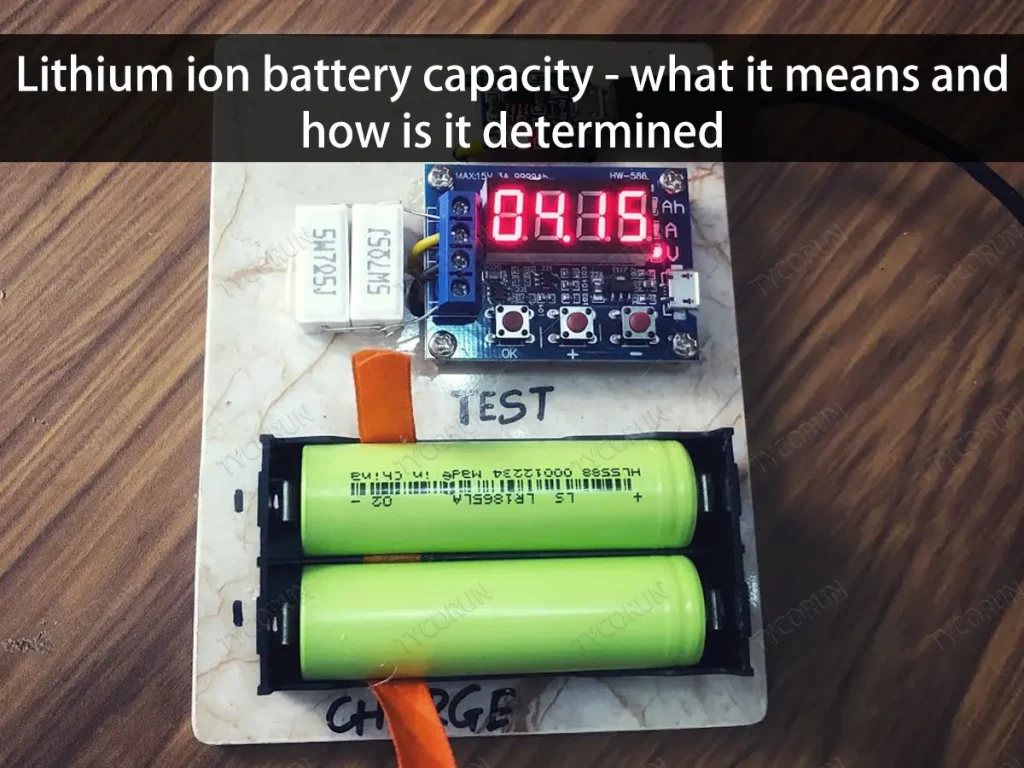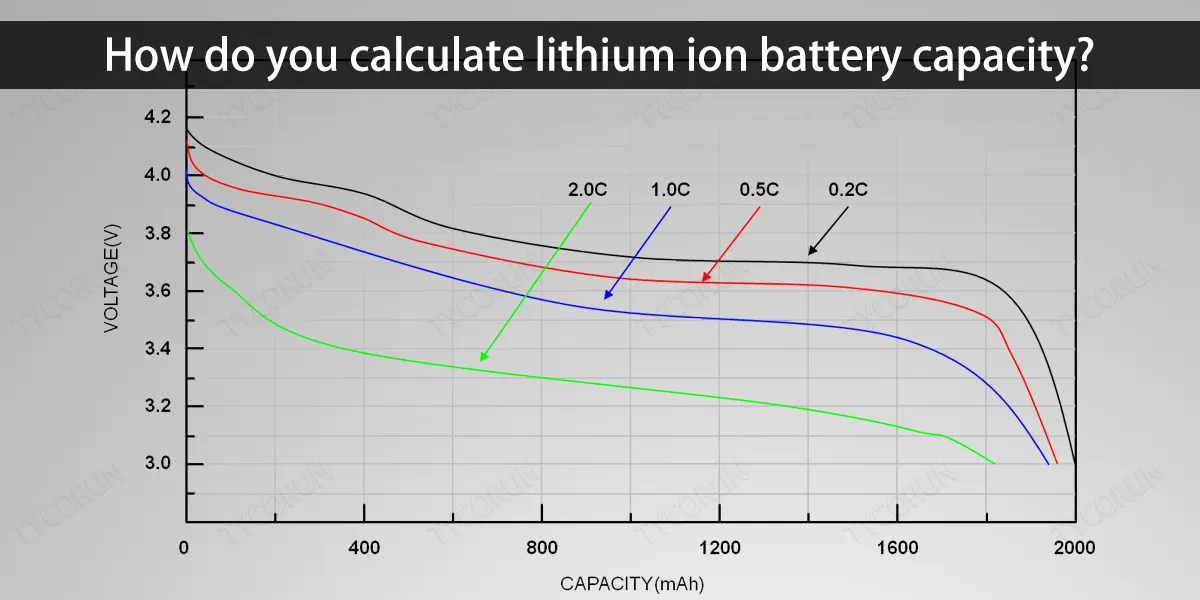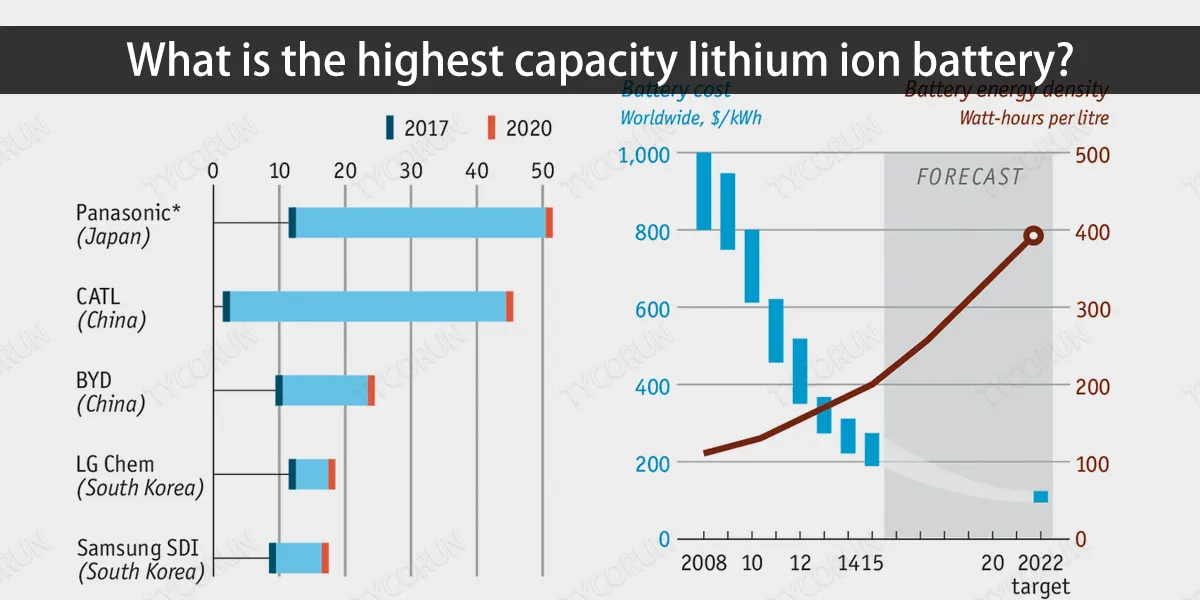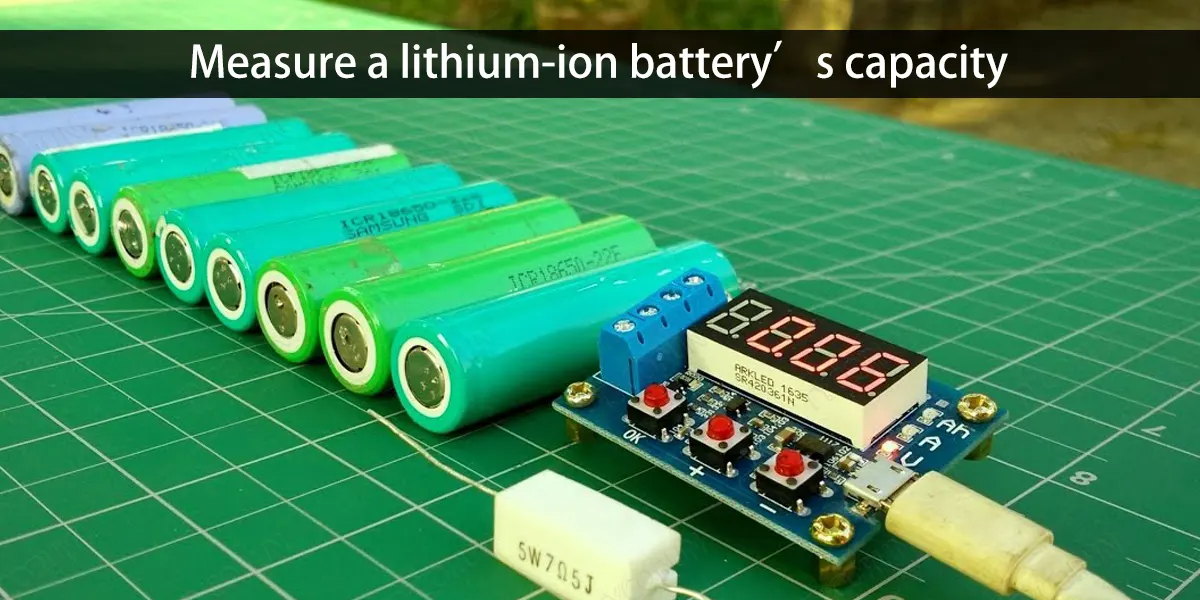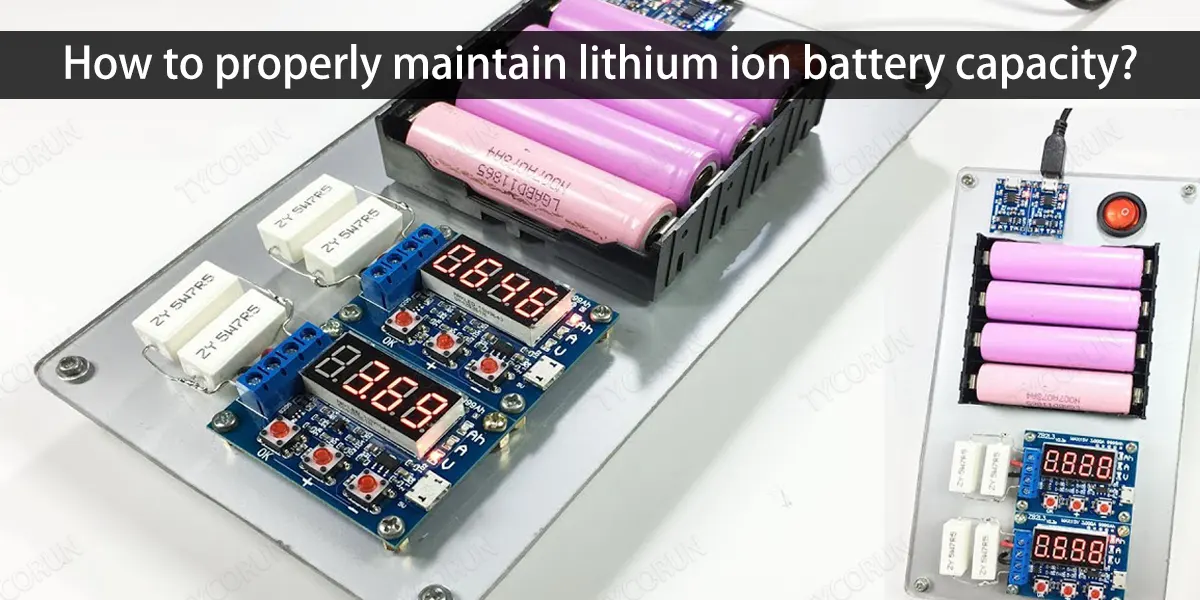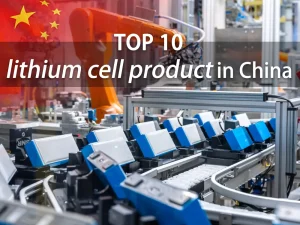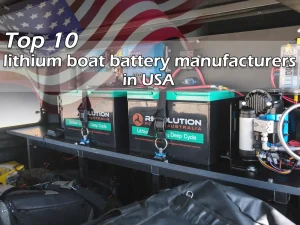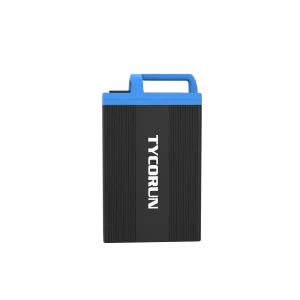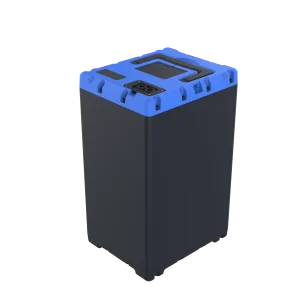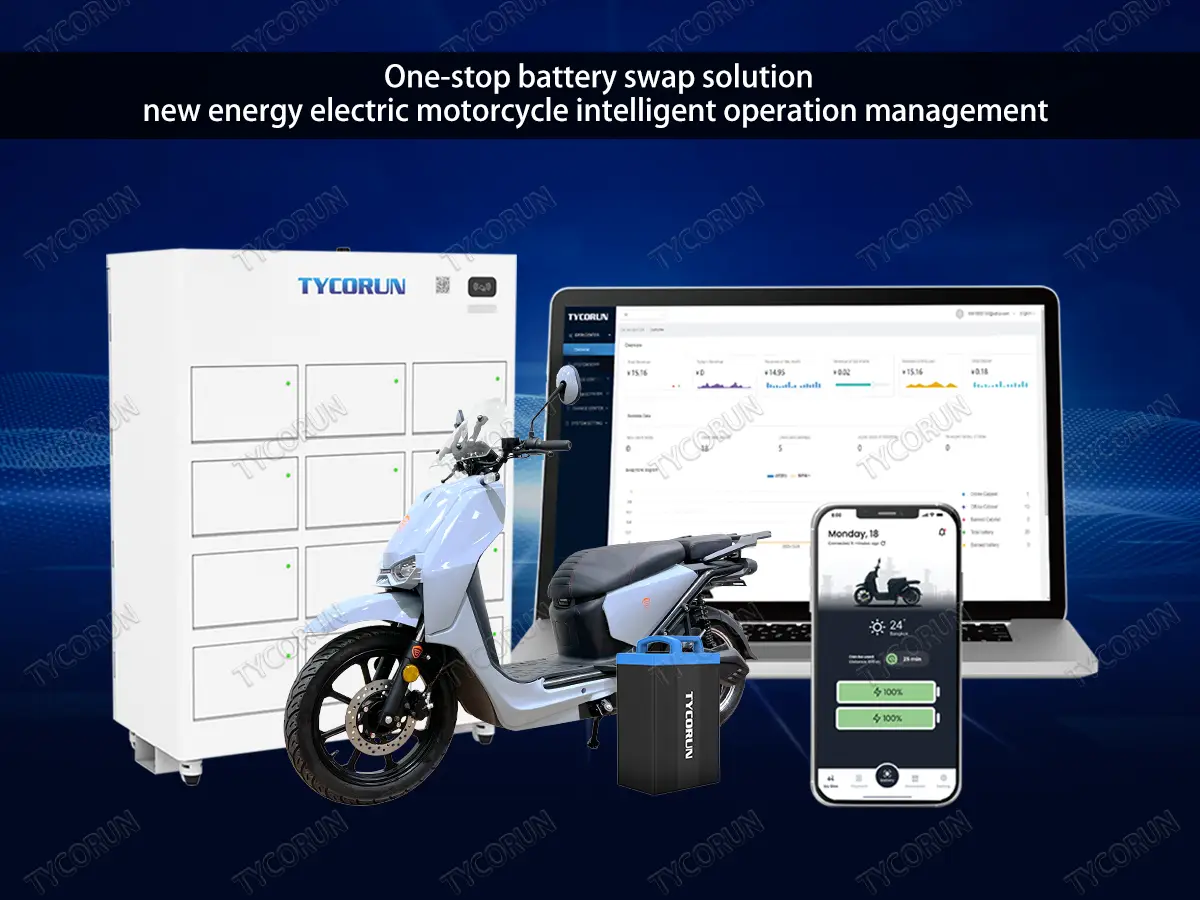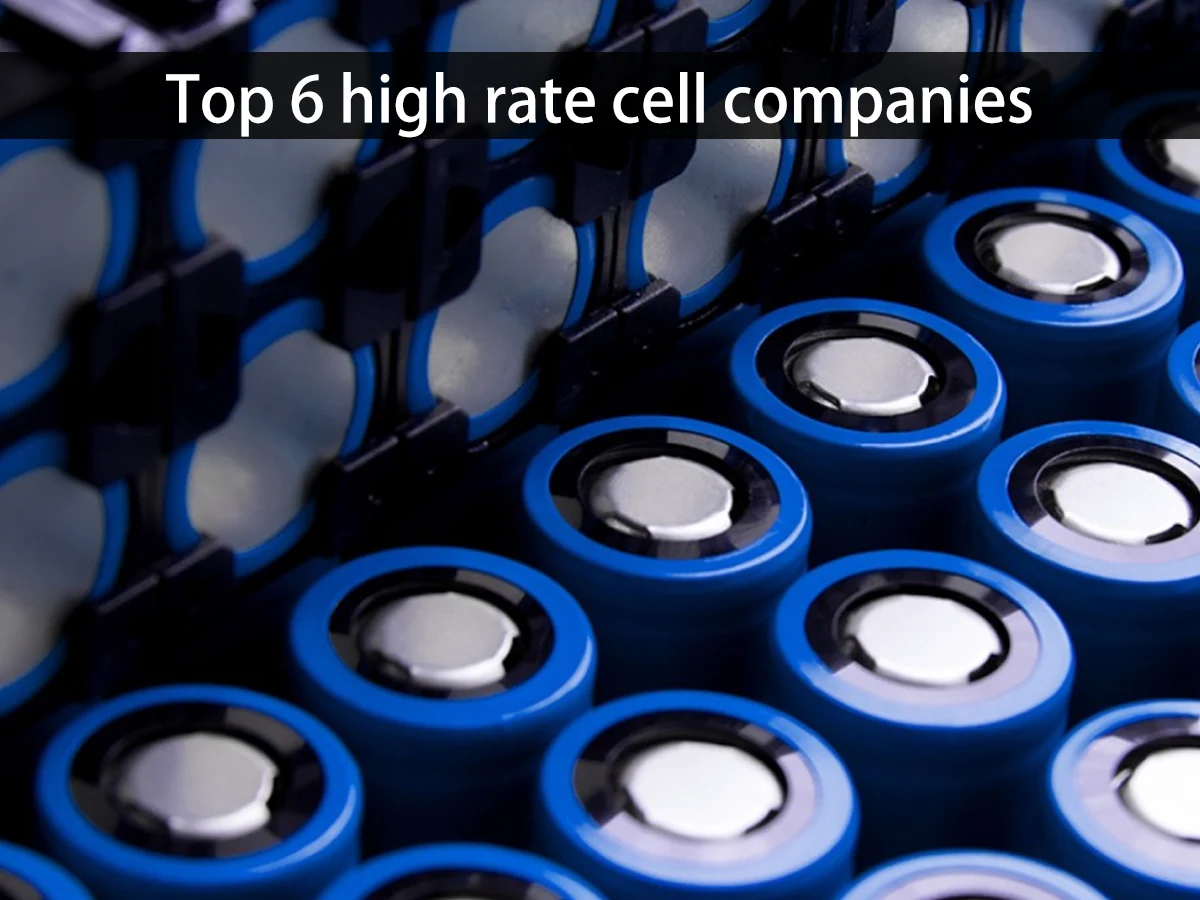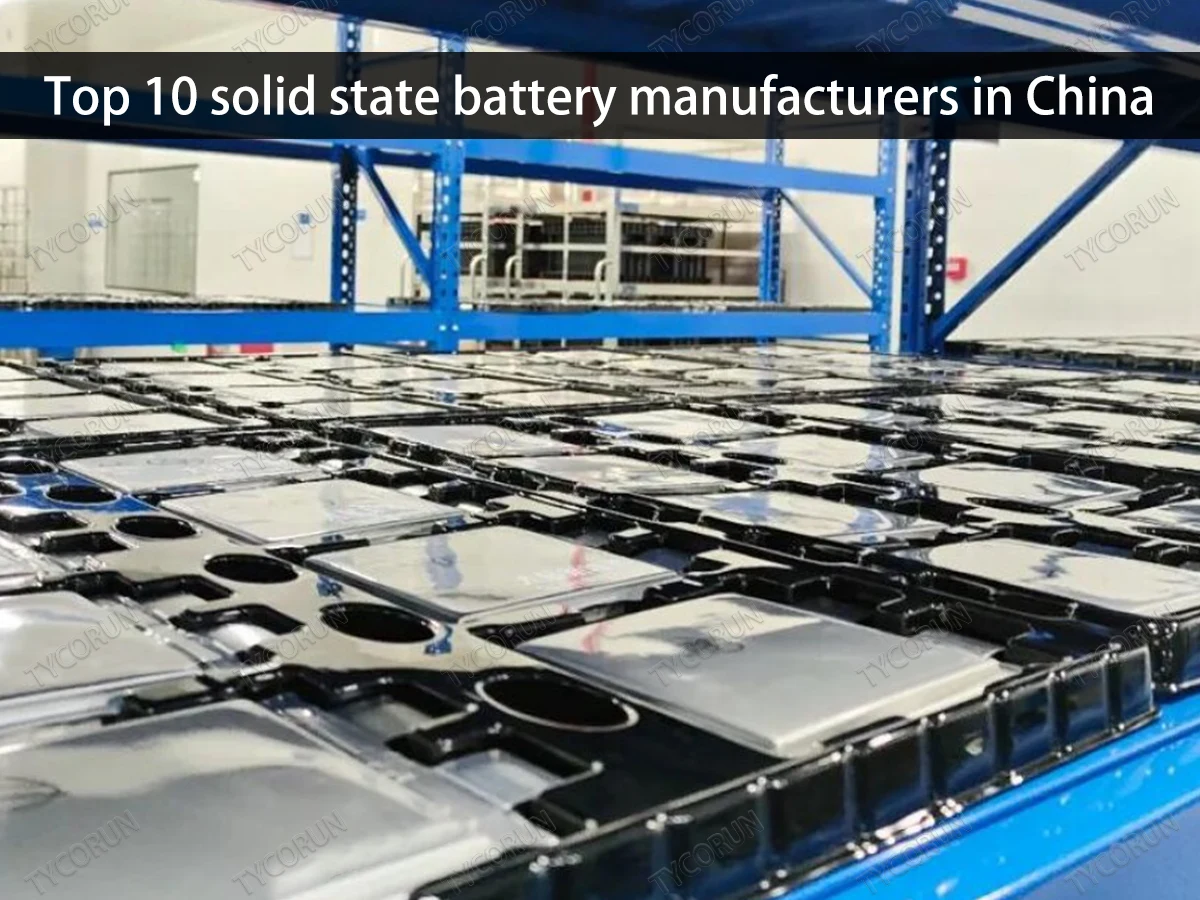Home » lithium ion battery knowledge » Lithium ion battery capacity – what it means and how is it determined
Lithium ion battery capacity - what it means and how is it determined
More and more electric devices are now powered by lithium-ion batteries. Knowing these batteries’ capacity may greatly affect their performance, longevity, and relevance.
You need to understand the ampere-hour (Ah) and watt-hour (Wh) scales in detail as they are used to quantify lithium-ion battery capacity. Insights into lithium ion battery capacity measurement and its practical implications are provided in this guide for your benefit.
You’ll learn to make an informed choice when purchasing a device with a lithium-ion battery. Also, read till the end if you’re a professional interested in learning more about battery technology.
What is the capacity of a lithium ion battery?
Lithium ion battery capacity is the utmost quantity of energy the battery can store and discharge as an electric current under specific conditions.
The lithium ion battery capacity is usually expressed or measured in ampere-hours (Ah) or milliampere-hours (mAh). The manufacturing technique and chemistry are the most significant factors influencing lithium-ion battery capacity.

Moreover, the dimensions and mass of the battery, together with its charge and depth of discharge, play crucial roles in determining the capacity of a lithium-ion battery.
In addition to the charging and discharging rates, environmental and battery temperatures significantly reduce or increase battery life and capacity.
Over time, a lithium-ion battery’s capacity may decrease or increase. Internal resistance, chemical deterioration, and physical damage all contribute to a decline in battery capacity over time in a phenomenon known as capacity fading. The rate of capacity loss is affected by how the battery is used and cared for.
How do you calculate lithium ion battery capacity?
You need to know the current and the time to calculate the lithium-ion battery capacity. The current, usually measured in amperes (A) or milliamperes (mA), is the amount of electric charge that flows through the battery per unit of time.
The time, usually measured in hours (h) or fractions of an hour, is the charge or discharge cycle duration.
The formula to calculate the lithium-ion battery capacity is:
Capacity (Ah) = Current (A) x Time (h)
If you have a lithium-ion battery that can provide a current of 2 A for 3 hours, you can calculate its capacity as:
Capacity (Ah) = 2 A x 3 h = 6 Ah
This indicates the battery has a storage capacity of 6 ampere-hours and an output of 6 amperes.
This method is a rough estimate since it does not consider variables such as temperature, battery status, discharge depth, charging and discharging rate, and battery age, all of which might impact battery capacity. Consequently, the actual battery capacity may be lower than the estimated figure.
What is the highest capacity lithium ion battery?
As our demand for electricity continues to grow, so does the capacity of batteries, particularly in the field of energy storage. Currently, most energy storage batteries can reach up to 280Ah capacity.
Top 10 lithium ion battery manufacturers in China are working on developing even higher capacity and safer lithium batteries to meet market demand. These companies are committed to exploring new ways to improve the safety and reliability of their batteries while increasing their capacity.
While the current highest capacity of lithium-ion batteries varies depending on the manufacturer, the advancements in battery technology are critical in the field of energy storage.
As renewable energy sources like wind and solar power are increasingly being used to generate electricity, energy storage batteries are key to storing and delivering this power when it is needed, making them a vital component of the energy system.
Continuing to invest in the development of more advanced battery technologies will not only ensure reliable and safe sources of energy but will also help us transition to a more sustainable future.
Common lithium ion battery capacity and its application reference
| Battery | Capacity | Applications |
|---|---|---|
| Tycorun 10.8v 18650 battery | 14000mAh | electric bicycles, scooters, drones, etc |
| CBJJ 3.7V Rechargeable Li-ion Battery 21700 Battery | 5000mAh | Flash light, remote control, power wheel |
| Bevigor Lithium AA battery | 3000mAh | Camera Flash, Power Tool, Photographic Lighting, |
| OooSure 3.7V 16650 button top rechargable lithium batteries | 2500mAh | Flash light, toy |
Each of the batteries listed above has its own unique features and applications. Be sure to consider factors such as voltage, capacity, and compatibility with your device before making a decision.
Whether you’re looking for an e-bike battery, camera battery, or power wheels battery, there’s a lithium battery to meet your needs.
Can lithium ion battery capacity be increased? how?
Lithium-ion battery capacity may be increased by optimizing the battery’s design, chemistry, and production processes.
Some of the ways to increase lithium-ion battery capacity are:
● Increasing the electrode surface area: Widening the contact area between the active components and the electrolyte may improve performance.
The number of electrochemical reactions a battery performs that you can enhance by expanding the electrode surface area relates directly to the amount of charge that can be stored and delivered in a battery.
● Using higher energy density materials: The energy density measures how much energy a battery can hold, how much it weighs, or how much space it takes up.
Using materials with a higher energy density can increase the amount of power saved in a battery of a certain size and weight. Some elements with a high energy density are silicon, sulfur, and lithium metal.
● Enhancing the electrolyte performance: The electrolyte is the conduit transporting ions between electrodes. Boosting the efficiency of the electrolyte may raise the battery’s conductivity, stability, and security. To improve electrolyte performance, one may use additions, solid or gel electrolytes, or ionic liquids, among other options.
How is lithium ion battery capacity measured?
A multimeter is a tool that can measure several electrical factors, including voltage, current, resistance, and continuity. You can also use the simple formula to determine a battery’s capacity.
You should follow the steps below to measure a lithium-ion battery’s capacity using a multimeter:
●Attach the multimeter to the battery’s positive and negative terminals and set it to measure current (A).
● Note the multimeter’s first current measurement.
● Attach a load to the battery, such as a light bulb or a resistor, and let it drain until the voltage falls below a certain level, such as 3 V.
● Note the multimeter’s final current measurement.
● Keep track of how long it took the battery to deplete from the starting voltage to the ending voltage.
● Multiply the average current by the period to get the battery’s capacity.
For example, if you have a lithium-ion battery that has an initial current of 2 A and a final current of 1.8 A, and it takes 2 hours to discharge from 4.2 V to 3 V, then its capacity is:
Capacity (Ah) = (2 A + 1.8 A) / 2 x 2 h = 3.8 Ah
What factors affect lithium ion battery capacity?
Temperature
Lithium-ion batteries are sensitive to temperature, both external (from the environment) and internal (from the battery itself).
When you expose the battery to high temperatures, the chemical processes within might speed up, resulting in a shorter cycle life and a quicker loss of capacity.
A battery’s power output and charging rate might suffer if it is kept at a temperature below its optimum range. Lithium-ion batteries’ ideal operating and storage temperature is between 20 and 25 degrees Celsius.
Charging Rate
The charging rate is the rate at which a battery is charged, often represented as a percentage of its full capacity. For example, a 1C charging rate indicates that the battery will be fully charged at a current equal to its capacity in one hour.
A higher charging rate may reduce the time you need to charge a battery completely. Still, the extra heat and stress it puts on the cell may cause the electrodes and electrolytes to be destroyed.
Slower charging might lengthen the battery’s lifetime, but it also increases the risk of overcharging and self-discharge. Lithium-ion batteries should thus be charged at the rate recommended by lithium battery manufacturer.
Depth of Discharge
The DoD measures the percentage of a battery’s used storage capacity before recharging. It is recommended to maintain lithium-ion batteries within a modest DoD range, often between 20% and 80%, and to prevent entirely draining or fully charging them.
Age
The battery’s age is another factor affecting its capacity and degradation. Physical and chemical changes in the battery’s interior components reduce its performance and efficiency as it ages.
These alterations include the disappearance of active ingredients, the expansion of solid electrolyte interphase (SEI), the formation of dendrites, a rise in internal resistance, a drop in electrolyte conductivity, and an increase in parasitic reactions.
Usage Pattern
The usage pattern you have is also a factor that affects a lithium battery’s capacity and degradation. The battery’s usage pattern is the frequency and duration of its utilization across various settings and tasks.
It is crucial to coordinate the features and properties of lithium-ion batteries with their intended functions and routines of use.
How to properly maintain lithium ion battery capacity?
Charge Your Battery Moderately
Keep your battery charged to between 20 and 80 percent of its capacity for optimal performance. Following that idea will help you avoid damaging the battery by overcharging or undercharging.
Smart chargers, which can adjust the charging current and voltage based on the battery’s state of charge, are another viable choice.
Avoid Extreme Temperatures
Extreme temperatures often speed up a battery’s capacity loss and degradation because of their effect on the chemical reactions inside it. High temperatures will raise the battery’s internal resistance and self-discharge, while low temperatures will reduce the battery’s power output and charging efficiency.
Keep your batteries at room temperature and away from direct sunlight and extreme cold. Your battery is best stored in a cool, dry place while it’s not being used.
Use Your Battery Regularly
The lifespan of lithium-ion batteries decreases with time and use. Even if you don’t use your battery, it will lose some of its capacity over time due to parasitic interactions and electrolyte dissolution.
If you want to preserve your battery from going into a deep discharge state and becoming ineffective, you should use it at least once every few weeks or months. You should also monitor the battery’s charge level and charge it if it drops below 50%.
Replace Your Battery When Necessary
Even with regular charging and maintenance, a lithium-ion battery’s useful life has a finite limit and will eventually need a replacement.
Depending on the kind, quality, and use, a lithium-ion battery may last about 2000 charges and discharges. You may monitor the SoH of your battery by checking its capacity, voltage, and internal resistance at regular intervals.
If you see a significant decrease in these indicators, poor performance, and a shorter duration from your smartphone, it may be time to get a new battery.
Conclusion
We’ve discussed how a battery’s health is affected by its capacity, which is the amount of energy it can store and provide.
Lithium-ion battery capacity is influenced by many factors, such as the battery cells’ type and quality, the battery’s voltage, temperature, charging rate, discharge depth, age, and use pattern.
Learning about these factors and calculating your lithium-ion battery capacity can help you optimize them to last longer and perform better.
FAQs
According to the type and quality of the cell, lithium-ion 18650 batteries' capacity ranges from 1200mAh to 3600mAh, with their size being 18 mm by 65 mm, and the nominal voltage is 3.6 volts.
The type and quality of the cells, the voltage, and the watt-hour rating all affect a 3-cell lithium-ion battery's capacity. The capacity range of a common 3-cell lithium-ion battery is between 6,000mAh and 10000mAh, with a nominal voltage of 9.6V or 10.8V based on the chemistry material.
The capacity of a 21700 Li-ion cell is the amount of energy it can store and deliver, which varies depending on the type and quality of the cell. However, it usually ranges from 3000mAh to 5100mAh, implying that a 21700 Li-ion battery may supply 10.5Wh to 18.9Wh of energy.


